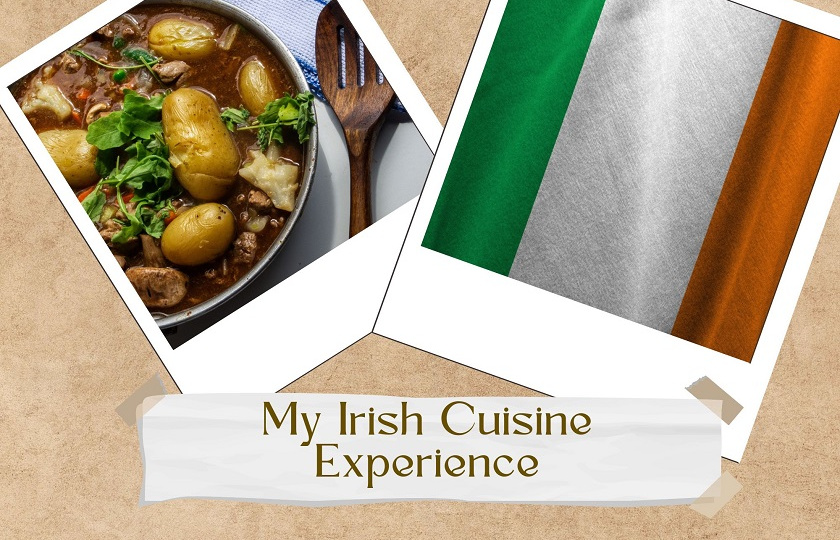
My Irish Cuisine Experience
I have been studying in Ireland for three months now. Yet, when I sat down to write this post for the blog, it took me a while to think of my experiences related to Irish cuisine.
I usually have lunch at Mary Immaculate College’s canteen or I cook something in the apartament at the student village. And what I have not realized before today is that the beauty of a country's cuisine is its day to day food, not the meals at fancy restaurants.
If you are an international student as I am, you probably do not even have enough money to go to restaurants and eat expensively. In my everyday lunch at MIC I have had the opportunity to experience Ireland’s flavor and gastronomy. Of course, I have also had other experiences getting to know a little bit of the habits of Irish people regarding food. And this post is exactly about those experiences.
Potatoes, of course!
First, I soon realized that potatoes play an important role in Irish dishes. Looking back at the photos from the canteen lunch I took in my first weeks, I could see potatoes every single day.
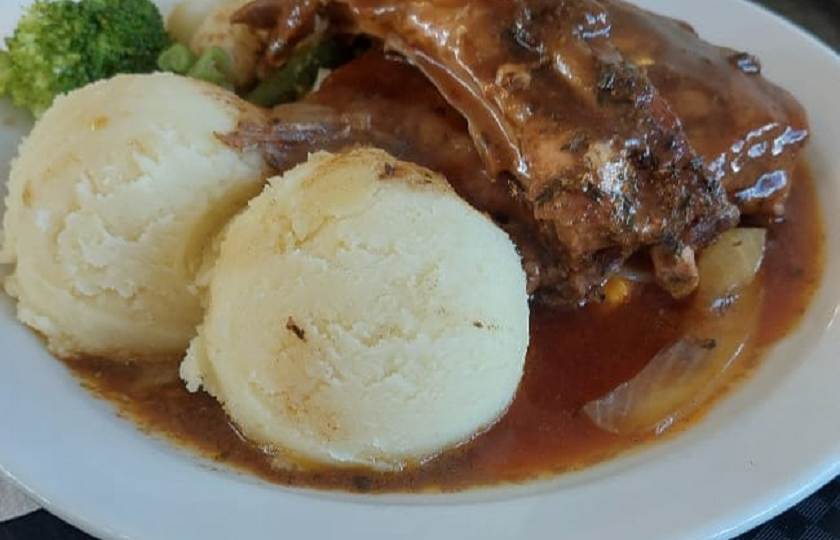
Potatoes are a big part of Irish cooking. They came to Ireland in the late 1500s and quickly became a popular food. Potatoes were cheap, healthy, and easy to grow, especially for poorer people. Sadly, this led to trouble during the Great Famine (1845–1852), when a disease killed the potato crops. Many people had no food and died or had to leave Ireland.
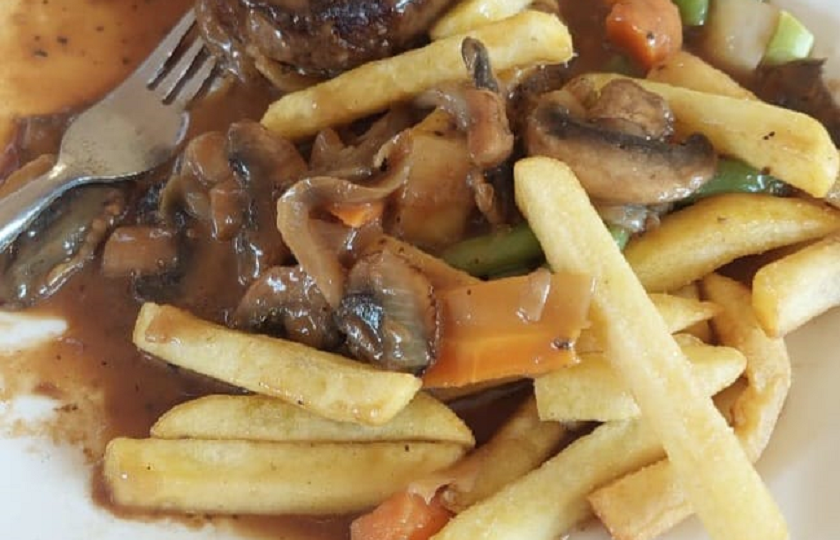
Even with this sad history, potatoes are still important in Irish cooking today. You’ll find them in dishes like champ (mashed potatoes with green onions), boxty (potato pancakes), and shepherd’s pie. Many Irish meals wouldn’t feel complete without some form of potato.
One thing that was unusual for me is having chips and lasagna together. And I enjoy every time they are on the menu.
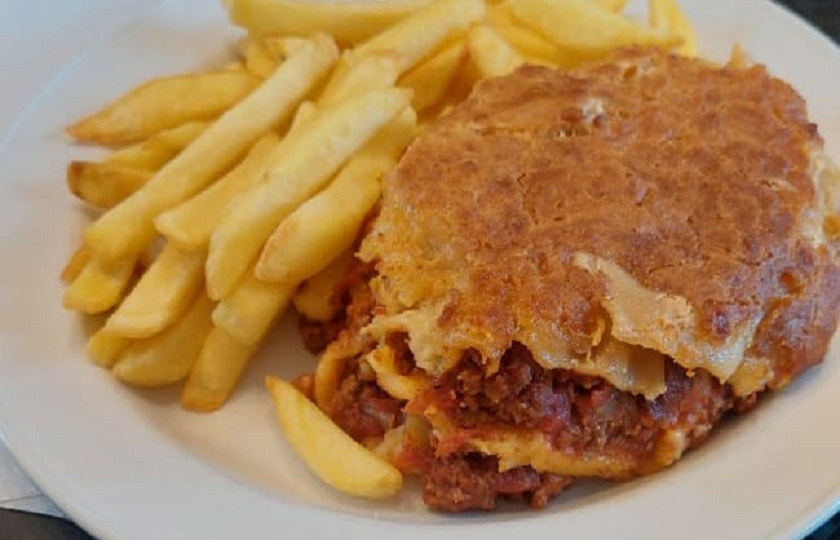
And I truly enjoyed fish and chips. I had them in the canteen sometimes. And I had twice in different places in Limerick: at Donkey Ford’s and Luigi’s Traditional Fish and Chips. I recommend you to try them both and tell me which one is your favorite.
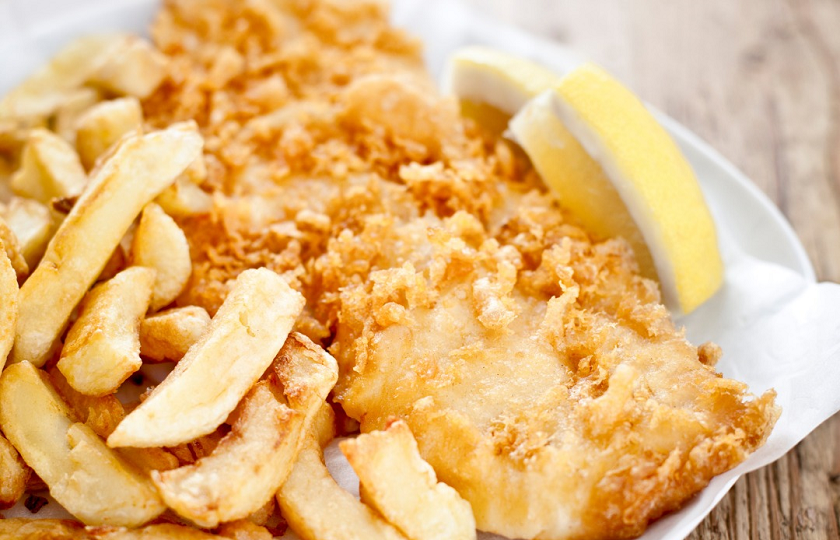
How about starting with an Irish Breakfast?
My first experience with Irish food outside MIC campus was a full Irish breakfast I had during a visit to Dublin. It was a feast of fried eggs, rashers (Irish bacon), black and white pudding, sausages, grilled tomatoes, baked beans, and toast. It felt less like a meal and more like an initiation into the essence of Irish comfort food. Every bite was flavorful, rich, and satisfying — a perfect start to a day of exploring the city. But, I must confess: for me, as a Brazilian, it was as complete as a lunch should be. So, I felt glad to choose this dish on my last day in Dublin.
If you want to have this experience, I was at Irish Potato Cake Company and I strongly recommend it.
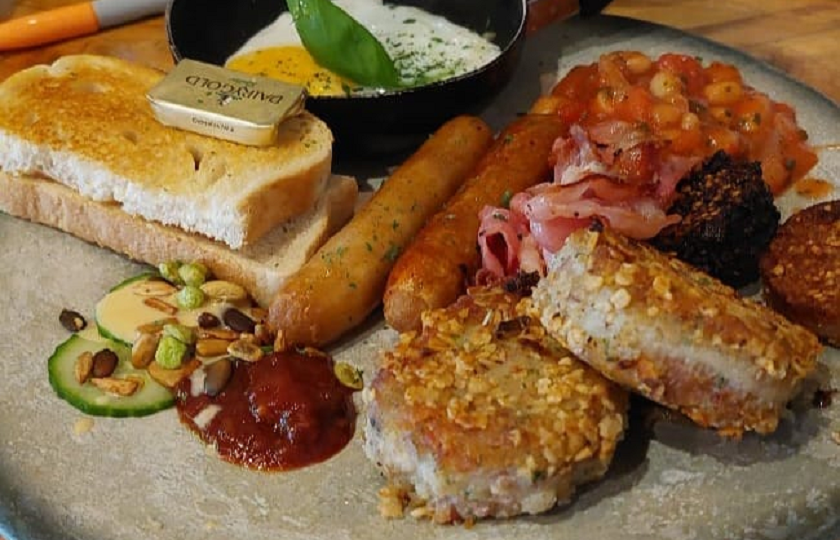
Irish Coffee
Although I do not drink alcohol nor coffee, I went to a pub in my first week in Limerick with two of my roommates who had this experience and they simply loved it. So, if this kind of drink is your cup of tea, go for it!
Irish coffee is a famous drink that mixes coffee, Irish whiskey, sugar, and cream. It was created in the 1940s by a chef named Joe Sheridan at Foynes Airport. He made it to warm up cold passengers arriving from transatlantic flights. This drink is rich and warm, just like Ireland’s hospitality.
Here’s an easy recipe I found on the internet on how to make Irish coffee at home:
Ingredients:
- 1 cup of hot coffee
- 1-2 teaspoons of brown sugar (add more if you like it sweeter)
- 1.5 ounces of Irish whiskey
- Heavy cream, whipped lightly
Steps:
- Pour the coffee into a warm glass.
- Stir in the sugar until it dissolves.
- Add the Irish whiskey and stir.
- Slowly pour the whipped cream over the back of a spoon so it floats on top.
- Don’t stir it—sip the coffee through the cream and enjoy!
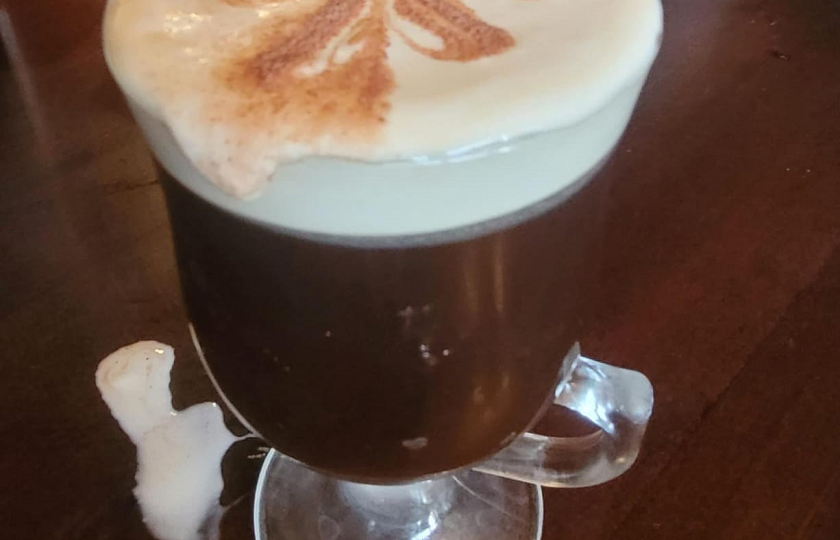
Lunch can be very different from what we are used to in our countries
Making new friends here, especially Irish people, I noticed that while lunch is usually a big meal in Brazil, here it seems that it can be lighter. Sandwiches, wraps, or some other small snack can be considered a meal.
When I went to Lahinch Beach on my way to the Cliffs of Moher, I ate a delicious sandwich at Joe’s Café, which I do recommend.
More recently, we were gently invited to participate in the Principals Conference 2024 and the lunch served was delicious and it has just confirmed how probably Irish lunch can be light, but delicious and healthy at the same time.

But… what is Irish number 1 dish after all?
I was very curious to know which food would better represent Ireland, just like feijoada in Brazil, for instance. Although more common in some states of the country, feijoada is a good representative.
Of course I searched on the internet to find this information. But I tried to double check asking this to some Irish people. They were unanimous in telling me that Irish stew is the number one dish here in Ireland.
I was told that, traditionally,l Irish stew tended to contain mutton or lamb, potatoes, and maybe a few carrots, but nowadays it ranges widely. While Irish stew (in the modern sense) can be made with mutton, lamb, or beef, beef stew is always made with beef.
I have eaten beef stew at MIC canteen some times. I can tell it is delicious. I will soon try the traditional Irish stew, which seems even more tasteful. Here is a recipe I have just found on the internet. I hope you enjoy it!
Irish stew - Ingredients and Preparation
The key components of Irish stew include:
- Meat: Lamb or mutton (often on the bone) adds rich flavor. Some modern versions use beef, depending on availability and preference.
- Potatoes: A cornerstone of the dish, they serve as a thickener and provide sustenance.
- Vegetables: Onions and carrots are traditional, though parsnips or leeks are occasionally included for variation.
- Broth: A base of water or stock, often seasoned with salt, pepper, and sometimes fresh herbs like thyme or parsley.
The ingredients are layered in a pot and cooked slowly over low heat, allowing the flavors to meld. Some recipes call for browning the meat first for added depth, while others maintain a more traditional, simple approach.
Historical and Cultural Significance
Irish stew has been a staple of Irish homes since the early 19th century, a time when people relied on locally sourced, affordable ingredients. The dish is a reflection of Ireland’s agricultural heritage and the resilience of its people during hard times, such as the Great Famine.
Today, Irish stew is enjoyed both as a comfort food and as a cultural dish, especially during celebrations like Saint Patrick’s Day. It is often served with soda bread to soak up the flavorful broth.
This traditional meal showcases how simple ingredients can come together to create a dish that is both filling and delicious.
Local Irish Food Spots I Want to Visit
I hope to have the chance to explore more of Ireland, I’d love to visit Galway for its seafood or Cork for its food markets (I went there once on a Sunday, and the market was closed). In Dublin, the Temple Bar area is famous for traditional Irish food and live music. Small-town pubs also serve great meals in a cozy setting, where you can really feel Irish culture. These places are important because they keep old recipes alive and share them with new generations.
Writing this post made me hungry and eager to learn more about Irish Cuisine! And of course I accept recommendations. What do you recommend?
-Solimar Silva, Brazil



